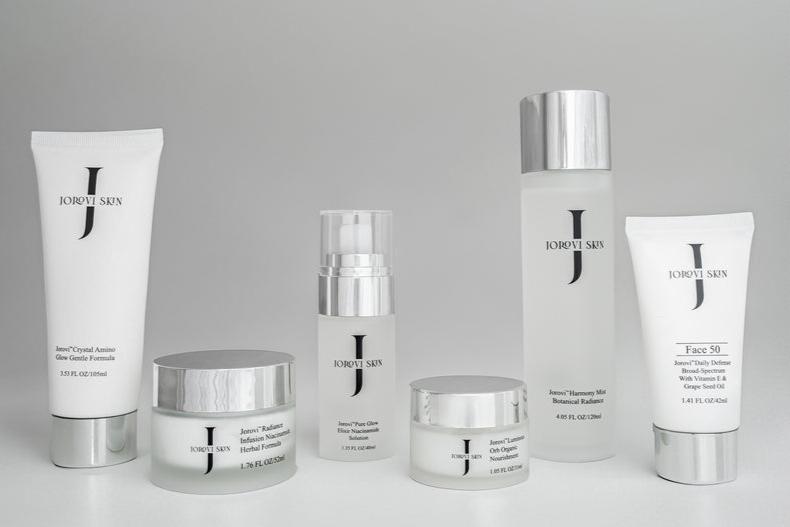
Niacinamide: The Multi-Tasking Ingredient Your Skin Will Thank You For
If you’ve ever felt overwhelmed by skincare ingredients — acids, retinoids, peptides, oils — here’s one you can trust: niacinamide (vitamin B3). It’s gentle yet effective. It suits nearly all skin types, including sensitive and barrier-compromised skin. And it delivers results backed by clinical science.
What Is Niacinamide?
Niacinamide is the water-soluble form of vitamin B3. In the skin, it supports cellular energy (via NAD/NADP), lipid synthesis, barrier function, and more. It doesn’t exfoliate aggressively — rather, it helps your skin repair and strengthen itself.
Scientific reviews describe niacinamide as a “multi-functional cosmeceutical ingredient.”
Why It Matters
Healthy skin starts with a strong barrier. That means lipids, ceramides, cholesterol and fatty acids organized in the stratum corneum, minimal inflammation, balanced sebum production. When any of those go off-kilter — barrier breakdown, redness, excess oil, discoloration — niacinamide can help. Practical Dermatogical
For example:
-
A double-blind trial with 5% niacinamide applied twice daily for 12 weeks found significant reductions in fine lines, hyperpigmented spots, redness, and improved elasticity.
-
In a narrative review, niacinamide was shown to “significantly reduce oxidative stress, inflammation, and pigmentation” in skin aging contexts.
-
In a 3-week real-world cream study, niacinamide increased skin hydration and improved skin tone in over 80% of participants.
Key Skin Benefits of Niacinamide
Here are the major benefits of niacinamide, with supporting science and how that translates to real-life skin care.
1. Strengthening the Skin Barrier
Niacinamide enhances synthesis of ceramides and other lipids that make up the barrier. A trial found 5% niacinamide boosted ceramide production by 34% in four weeks, reducing transepidermal water loss (TEWL).
What this means: Your skin holds onto moisture better, resists external irritants and is less prone to redness and sensitivity. That’s vital if you’re using other actives or if you have sensitive skin.
2. Smoothing Texture & Reducing Fine Lines
By improving lipid synthesis, reducing glycation (which stiffens collagen/elastin) and improving elasticity, niacinamide helps refine texture. A 12-week study with 5% niacinamide showed a 21% improvement in fine lines, 14% increased clarity and 15% more radiance.
What this means: Skin looks and feels smoother, more even, more youthful — without the harshness of stronger exfoliants.
3. Brightening & Evening Skin Tone
Niacinamide doesn’t bleach skin. Instead, it prevents pigment transfer (melanosomes) from melanocytes to keratinocytes. Mechanistic reviews show its antipigmentation effect in hypermelanosis and uneven tone.
What this means: Dark spots, sun damage, hyperpigmentation can be lessened over time — especially when paired with sunscreen and other brighteners.
4. Reducing Redness & Inflammation
Niacinamide down-regulates inflammatory cytokines (IL-1, IL-6) and supports the skin’s antioxidant defenses (via NAD/NADP).
What this means: If your skin is reactive, prone to redness, rosacea or irritation, niacinamide offers calming support.
5. Regulating Sebum & Minimizing Pores
Studies show niacinamide at appropriate concentrations reduced surface oil and improved pore appearance.
What this means: For oily or combination skin, niacinamide can help manage oil production while still being gentle — a win for skin needing balance rather than stripping.
6. Supporting Anti-Aging & Skin Resilience
Beyond visible improvements, niacinamide also helps cellular processes: boosting NAD/NADP, reducing glycation (which causes yellowing and stiff collagen), and potentially reducing risks of non-melanoma skin cancer (in oral studies).
What this means: It’s not just cosmetic; it supports long-term skin health and resilience.
How to Use Niacinamide Effectively
Because niacinamide is so gentle and versatile, you can easily incorporate it into your routine. Here’s how:
-
Choose the right concentration. Many effective formulas sit in the 2-10% range. Higher isn’t always better if your skin is sensitive. (Allure)
-
Use it in the correct order. After cleansing and toner, apply your niacinamide serum, then moisturizer, then SPF (AM).
-
Pair it smartly with other actives.
-
Works well with vitamin C, peptides, hyaluronic acid.
-
If you use stronger actives like retinoids or exfoliants, niacinamide can be your barrier-supporting formula.
-
-
Be consistent. Results buildup over weeks. A 4-12 week period is typical for visible change.
-
Choose formulas aligned with your skin type and barrier health. If your skin is compromised, stick with simpler formulations first and build up.
Why It’s a Smart Ingredient for All Skin Types
-
Sensitive skin? Niacinamide is well-tolerated and supports barrier repair.
-
Dry skin? Strengthens the barrier and improves hydration retention.
-
Combination/oily skin? Regulates oil production without stripping.
-
Pigmentation or dullness? Brightening and anti-glycation effects help restore clarity.
-
Taking other actives? Use niacinamide to reinforce barrier and increase tolerance.
How This Fits Into a Full Routine or Kit
While a standalone niacinamide serum (like The Ordinary’s) is powerful, you’ll get more holistic benefits when it’s part of a complete barrier-respecting routine. That’s where the Jorovi Beauty Set comes in: it’s designed to support barrier health, layering of actives, and daily consistency.
The set provides cleanser → toner → niacinamide-compatible formulation → moisturizer → sunscreen, making it easier to integrate. If you’re using niacinamide as part of your routine, pairing it with a comprehensive kit amplifies the benefit.
Choosing Product Options
-
Looking for an affordable, proven niacinamide serum? Try the standalone option: The Ordinary Niacinamide 10% + Zinc 1% (link above).
-
Want a full-routine system built around barrier health, including niacinamide-compatible formulations? Consider the Jorovi Beauty Set (link above).
Choosing a full kit or sticking with a single serum depends on your time, budget, and how much you want to simplify your routine.
Realistic Expectations & What to Watch
-
Timeline: Some improvements (hydration, tone) may appear in 3-4 weeks; more significant changes (texture, fine lines) may take 8-12 weeks or more.
-
Patch test: Even gentle actives deserve a patch test, especially if you have ultra-sensitive or compromised skin.
-
Barrier health matters: If your barrier is already damaged (redness, peeling, irritation), prioritize barrier repair alongside niacinamide — or use it as a supportive active rather than as the only treatment.
-
Not a magic fix: While niacinamide is powerful, it may not alone correct severe conditions (deep wrinkles, advanced melasma, acne scarring). Those may need complementary actives or professional treatments.
-
Sun protection: Brightening actives only work when UV damage is minimized — daily SPF is a must.
If you bring one ingredient into your routine that “does a lot” without drama, let it be niacinamide. It’s scientifically validated, well tolerated, and suits almost all skin types. Whether you use a focused serum or incorporate it into a full-routine kit, the benefits are wide ranging: smoother texture, stronger barrier, even tone, less redness, more resilience.
And when you pair it with a barrier-supportive system (like the Jorovi Beauty Set), you’re not just applying actives — you’re building a foundation for healthier skin.
Use it consistently. Keep your barrier priority number one. And give your skin the time it needs to show results.



